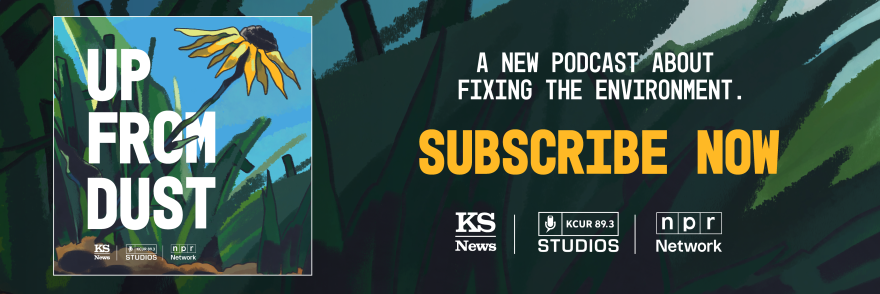Dawn Buehler spent her childhood helping out on the family farm in De Soto, next to the Kansas River.
But when her chores were done, the river beckoned. She and her family would canoe and fish. Sometimes they would camp on a sandbar.
“You felt like you were in the last wild place in Kansas,” she said. “You could go out to the sandbar in the middle of the river and be away from everything.”
With memories like that, it’s not hard to understand why she is so motivated to clean up the decades-old trash sites in the river.
Buehler is the executive director of Friends of the Kaw, a nonprofit group focused on protecting a watershed that drains part of Colorado and Nebraska and about half of Kansas.

This basin is, according to the U.S. Army Corps of Engineers, the world’s longest prairie-based river.
By some measures, water quality has improved greatly in recent decades because of the 1972 Clean Water Act that regulated what cities and most industries can dump into waterways.
But the Kansas River, like other bodies of water in the U.S., still faces a host of challenges that range from fertilizer running off of farms and lawns to invasive species squeezing out native wildlife.
Another challenge: Tires and other garbage have stayed for decades at some sites along the river, slowly releasing chemicals and marring the beautiful, golden sandbars that endear it to fishermen, canoers, birdwatchers and others.

“This is my home and it’s the home of people before me and people after me,” kayaker and retired geology teacher Lynne Beatty said. “And I want to make sure it's something that they can come out and enjoy.”
Beatty used to bring her Johnson County Community College students to the river to learn about sandbar geology and watersheds firsthand.
Over the past decade, these are the kind of people — with a strong connection to the Kansas River — who have set about cleaning up sites that have long needed attention.
Volunteers for Friends of the Kaw — many of them skilled kayakers — monitor the river year-round and keep a detailed list of these sites.

With help from hunting and fishing groups, college students, Rotary clubs, construction crews, county governments and other hands on deck, they’ve made real progress toward a 2030 goal to work through every site on their list.
In July’s episode of the Kansas News Service podcast Up From Dust, hear the history and the ongoing challenges — and meet some of the kayakers, game wardens, construction workers and others putting muscle into saving the Kansas River from literal tons of garbage.
“It feels like we’re helping out the wildlife, the fish — getting the chemical levels to reduce,” said Malik Nash, a worker with Garney Construction.
Yet even as they remove tires and vehicle battery cases by the thousands, a different source of pollution has gotten worse.

A relentless supply of plastic items — such as water bottles and candy wrappers – is washing off the streets of each city in the watershed. This trash accumulates in pockets of the river called eddies.
In recent years, Friends of the Kaw has added cleaning up these eddies to its list of daunting tasks. The group is determined to reduce the amount of garbage making the journey to the Gulf of Mexico, which is already awash in microplastics.
As word spreads, the group’s cleanup events have started attracting crowds that number as much as a few hundred people willing to help pick up litter in or near the river.
“Our goal is to make sure that Kansas sends as little as possible downstream,” Buehler said. “We’d like to take care of our own trash here in our own space, but we really need the public's help to do it.”
Celia Llopis-Jepsen is the environment reporter for the Kansas News Service and host of the environmental podcast Up From Dust. You can follow her on Bluesky or email her at celia (at) kcur (dot) org.
The Kansas News Service is a collaboration of KCUR, Kansas Public Radio, KMUW and High Plains Public Radio focused on health, the social determinants of health and their connection to public policy.
Kansas News Service stories and photos may be republished by news media at no cost with proper attribution and a link to ksnewsservice.org.








